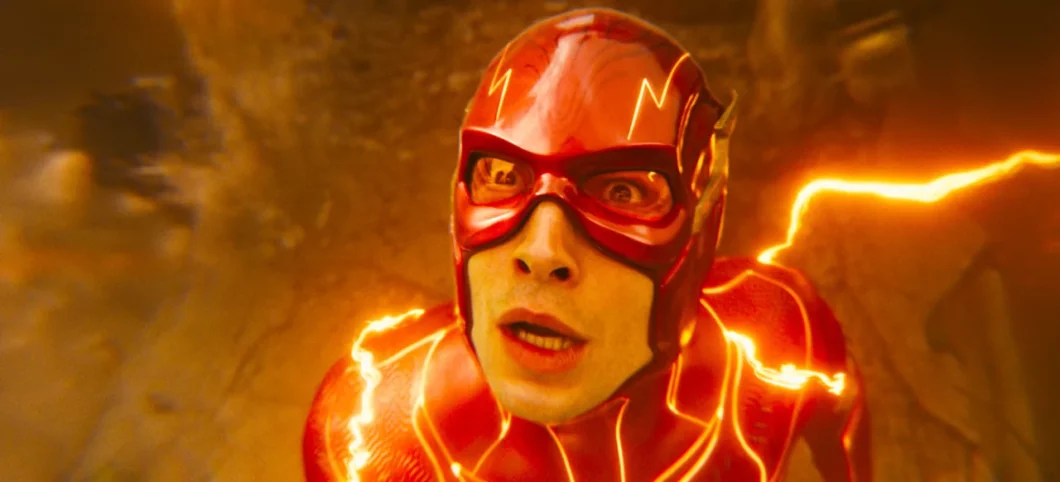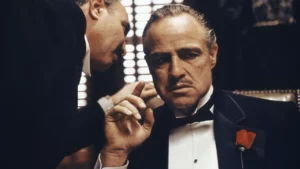
Within the expansive domain of superhero cinema, where tales of valor and triumph often illuminate the silver screen, there occasionally emerges a somber narrative of monumental failure that resonates as a cautionary echo within the industry. Such is the poignant case of The Flash, a film that, from its inception, seemed poised to ascend to new heights of cinematic glory, only to tragically crash and burn into the annals of infamy. This tale of hopeful anticipation souring into bitter disillusionment serves as an illuminating reminder of the elaborate and delicate dynamics that can lead even the grandest of cinematic endeavors astray.
As cinematic enthusiasts, we are well-acquainted with the enchantment that accompanies the unveiling of a new superhero movie. The anticipation builds like an electric charge as trailers tease us with glimpses of heroism and adventure, promising to transport us to extraordinary dimensions of imagination. The world of superhero films, with its iconic characters and epic battles between good and evil, captures the hearts of audiences worldwide.
Yet, while these stories often weave the fabric of triumph and heroism, the undercurrent of uncertainty and potential for failure is ever-present, a reminder that not every venture onto the silver screen can attain the soaring heights of success. The Flash embodies this paradox in its starkest form, representing a journey that started with soaring aspirations only to spiral into unforeseen depths of disappointment.
Behind-the-Scenes Turmoil of The Flash
Behind the scenes, The Flash bore witness to a succession of creative clashes, directorial turnovers, and script rewrites that punctuated its tumultuous journey. The initial blow was dealt when Phil Lord and Chris Miller, celebrated for their work on The Lego Movie and Spider-Verse, relinquished their roles due to insurmountable creative differences with the studio’s overarching vision.
Subsequent directors, including Seth Graham Smith and Rick Famuyiwa, found themselves ensnared in the quagmire of artistic discord, prompting their untimely exit from the project. Warner Brothers’ quest for a director whose vision seamlessly aligned with their own gave rise to a revolving door of creative talent.
However, the pivotal juncture arrived in January 2017 when the studio undertook a radical transformation of the film’s trajectory. The decision to enlist writer Joby Harold for a comprehensive rewrite marked a profound departure from the original artistic direction. Concurrently, a parade of accomplished directors declined the opportunity to helm the project, including luminaries like Robert Zemeckis, Matthew Vaughn, and Sam Raimi.
Yet, the saga of The Flash took an even more tumultuous turn as Ezra Miller’s discontent with the evolving directorial approach ushered in yet another layer of complexity, leading to clashes that strained the very foundations of the movie’s progress.
The Downfall of The Flash
The Flash’s journey began nearly a decade before its long-awaited premiere, sparking excitement among fans and enthusiasts alike. Ezra Miller’s casting as the enigmatic speedster in 2014, coupled with the promise of a forthcoming movie, ignited anticipation across the cinematic landscape. However, this initial enthusiasm encountered unforeseen challenges, transforming the project from a beacon of hope into a cautionary tale of dashed aspirations.
Amidst this anticipation, an unexpected and unsettling controversy took center stage, casting a shadow over the production and sparking conversations that transcended entertainment boundaries. Ezra Miller, the actor set to portray the beloved character, became entangled in a maelstrom of allegations and accusations that reverberated through media and fan communities. This controversy shed light on the complex interplay between an artist’s public image and their private actions, revealing the intricate dynamics that arise when fandom collides with real-world events.
Ezra Miller’s Controversy
Amidst The Flash’s tumultuous narrative, an unsettling controversy emerged, casting a shadow over the production and sparking discussions beyond entertainment. Ezra Miller, tasked with embodying the beloved character, became embroiled in allegations that rippled through media and fandom. This incident exposed the delicate interplay between an artist’s public image and their actions, highlighting the complexities when fan enthusiasm intersects with real-world turmoil.
Allegations of misconduct and assault sent shockwaves through Miller’s fan base and the industry, revealing the thin boundary between an actor’s on-screen role and off-screen persona. Those anticipating Miller’s portrayal of the hero faced a moral dilemma, reconciling character admiration with troubling claims about the actor.
Warner Brothers’ decision to retain Miller prompted varied responses, applauding the separation of individual and character or critiquing perceived endorsement of alleged misconduct. The controversy served as a crucible for debates on studio ethics, celebrity influence, and the balance between fandom and moral considerations. The focus on Ezra Miller’s controversy extended broader discussions about accountability, ethics, and the far-reaching impact of public figures on society.
High Hopes and Disappointing Realities
The Flash was envisioned as a beacon of potential in the superhero cinematic landscape, with Ezra Miller’s casting signaling ambitious aspirations. Years of anticipation swelled, fueled by the promise of a narrative that could reshape the genre. However, the journey from concept to reality proved tumultuous, marked by changing directors and wavering creative visions. Fans clung to hope as the film navigated its turbulent development.
When The Flash finally debuted, it exposed a stark divide between its soaring potential and the disheartening outcome. Aspirations of depth and innovation were mired in disjointed storytelling and unrealized ambitions. The film’s disappointing execution underscored the complex interplay between creative ambition and the challenges of bringing a vision to life. This disillusionment, a reminder of the treacherous path from concept to realization, mirrored the paradoxes often found within the superhero genre itself.
The Box Office Catastrophe
As the much-anticipated The Flash finally graced the silver screen, it encountered an audience that was far from unanimous in its reception. While some viewers found elements to cherish, others remained hesitant due to the controversy enveloping Ezra Miller or their own saturation with the ever-expanding superhero genre. The polarized reception culminated in a catastrophic box office performance that solidified The Flash as an unprecedented failure within the realm of comic book cinema.
The financial repercussions were profound, with estimates pegging losses at an astounding $200 million. In the annals of cinematic history, only Disney’s John Carter had managed to eclipse The Flash in terms of fiscal misfortune. Warner Brothers confronted the sobering aftermath of a project ensnared by controversies, artistic disarray, and a reception that proved far from favorable.
The Movie Culture Synopsis
As the curtain falls on The Flash, its tumultuous journey serves as a poignant reminder of the precarious path that filmmaking treads. The narrative of anticipation and letdown, creative clashes, and controversy encapsulates the complex dance between artistic vision and the realities of the industry. From conception to execution, the evolution of a cinematic endeavor is marked by an interplay of ambition, challenges, and unforeseen twists.
The Flash stands as a testament to the Complex fabric that weaves together triumph and tragedy in the realm of superhero cinema. Its legacy serves as a cautionary tale for creators, reminding them of the need for resilience, ethical discernment, and the unpredictability that accompanies artistic creation.
The behind-the-scenes narrative is a poignant reminder that the journey to cinematic greatness is as captivating as the tales projected onto the silver screen, underscoring the enduring truth that within every superhero’s journey lies a powerful lesson for both creators and audiences alike.



